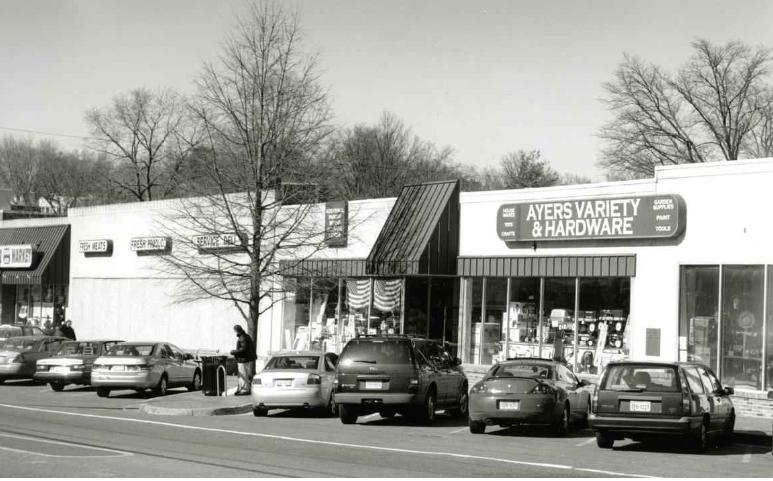
A pedestrian-friendly neighborhood in Arlington sees its residents walk to shops, restaurants, work, and public transportation.
Westover is a pedestrian-friendly neighborhood in Arlington, Virginia, located on the National Register of Historic Places. It is centered on Washington Boulevard, between North McKinley Road and North Longfellow Street. The community is a great example of mid-century urbanism, where residents can easily access shops, work, and public transportation on foot.
The neighborhood is situated between the Ballston Station and the East Falls Church Station, both of which are part of the Washington DC Metro. Additionally, a Metro Bus line services the area. In the 19th and early 20th centuries, the Westover neighborhood was primarily used for agriculture. During the mid-1800s, the land belonged to Nicholas Febrey, who was not only a civic leader in Arlington but also one of the largest landowners in the area. In the 1890s, new electric railways began to service the area, leading to the development of small communities as real estate developers started dividing the land.
One such community, Fostoria, was built by the Fostoria Land and Development Company in 1890. It took advantage of the Washington, Arlington, and Falls Church Electric Railway that provided passenger service from Rosslyn to East Falls Church, running along Four Mile Run. By 1907, the neighborhood had been renamed Highland Park, where the earliest houses constructed in the Westover area are located.
The Walter Reed Elementary School was built in 1938 on McKinley Road, which was originally a part of Febrey farmland. This school was an indication of the development in the area at that time. Even though Westover had undergone significant development over the previous fifty years, the area was still mostly undeveloped in 1938 when the school was constructed. The majority of Westover was owned by Ashton C. Jones and his wife, Margaret Rucker. Jones transferred the land to Mace Properties, Inc., a local development company owned by Miles A. Mace.
Between 1939 and 1948, Mace Properties developed most of the buildings located in the current Westover Historic District. Mace, a real estate broker who lived in Arlington County, developed several neighborhoods in the early twentieth century, providing affordable housing to the growing population, following the principles set forth by the FHA. While he was only just twenty-six years old, he played a significant role in the development of the Over-Lee Knolls community, which is now considered part of greater Westover and adjacent to Westover to the northwest.
The Over-Lee Knolls neighborhood was advertised in 1926 as "Virginia's Ideal Suburb," emphasizing value and quality construction. In October of 1938, Arlington County approved the rezoning of 120 acres of land, allowing Mace Properties to begin constructing large multi-family apartment buildings.
In April of 1939, Mace Properties announced that it had received approval from the Federal Housing Administration (FHA) to build low-cost multi-family rental housing. The first of these buildings was a 152 unit garden-style apartment complex, which cost Mace a total of $600,000 to build.
In 1940, the Westover Hills project was announced, which was backed by the FHA. This project was hailed as the "most ambitious building program in Mace Properties' history." It included a variety of dwellings, such as single-family houses, twin houses, and garden apartments, all designed by Thelander and Washington, D.C. architect Harry E. Ormston.
The Westover Shopping Center was built in 1940 between Longfellow and McKinley Streets along Washington Boulevard. It consisted of a 13-store retail center, which included a Safeway grocery store, a "five and dime" store, and a pharmacy. According to county planners in 1958, the center had higher retail sales per store than any of the five competing neighborhood or community centers nearby. However, the center's physical condition and sales declined by the late seventies.
In 1978, the Arlington County Board allocated $50,000 in business and neighborhood conservation funds to supplement the center's owners' planned $250,000 exterior renovation work. Westover is a residential suburban community that has retained its original character over the years.
The shopping center in the area still offers a variety of retail options to the community. The neighborhood is mostly made up of modest, pre-World War II single-family homes and garden-style apartment complexes, such as the Westover Apartments.
Images
